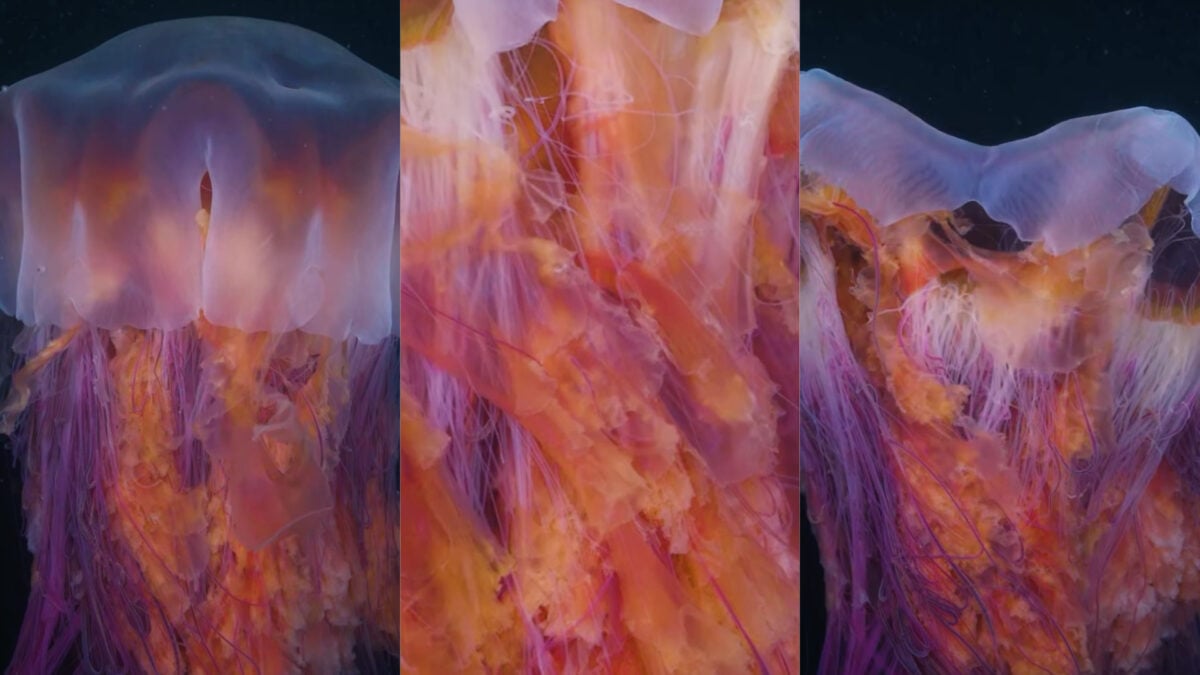An underwater videographer has just published mesmerizing footage of the world’s largest, longest, and heaviest known jellyfish species—a lion’s mane jelly.
“Several minutes into the dive, I noticed a long, thin tentacle trailing overhead, stretching far beyond my vision,” John Roney wrote in a social media post. “I followed it through the darkness for over a minute before coming upon a giant Lion’s Mane Jellyfish.”
First, he spotted its tentacle
Imagine how long that tentacle must have been if it took Roney that long to trace it back to its owner. The video captures the giant jelly’s pale, translucent bell flowing like a tablecloth over a mass of orange and purple with the peaceful sound of water in the background. Some close-up shots highlight the hypnotizing details of its tentacles.
Roney captured the footage after sunset while diving with a fellow underwater videographer in the Salish Sea, an inland sea on North America’s west coast connected to the Pacific Ocean.
“These incredible creatures can reach unbelievable sizes—the largest recorded had a bell with a diameter of 7 feet (2.1 meters) and tentacles extending up to 120 feet (36.6 meters). They use their stinging tentacles to ensnare, pull in, and eat prey such as fish, zooplankton, and other jellyfish,” Roney added. “They also have these deep, vibrant orange, purple and crimson colours that I love to film. But fair warning—this is a jellyfish you definitely don’t want to touch.”
Moderately painful
According to the Virginia Institute of Marine Science, the lion’s mane jelly’s sting is moderately painful. Nevertheless, it has likely haunted some people’s imaginations since Sir Arthur Conan Doyle featured the creature as a mysterious murderer in his short story, “The Adventure of the Lion’s Mane.”
While beautiful, the jellyfish’s extreme size could be misinterpreted as the stuff of nightmares. The largest known specimen is 120 feet (36.5 meters) long, according to the Smithsonian Museum of Natural History. And while it’s difficult to get an exact weight measurement (good luck placing one on a scale), the Guinness World Record reports an estimated maximum weight of over 1 tonne, given its body size, volume, and total tentacle mass.
Best rest assured—most lion’s mane jellyfish are usually spotted far from the coast. Still, I’d rather have a run-in with a lion’s mane jellyfish than the smaller Australian box jellyfish, the world’s most venomous marine animal (of course it’s in Australia). And speaking of venomous animals, have you heard that some mamba bites are even worse than we thought?
First Appeared on
Source link












